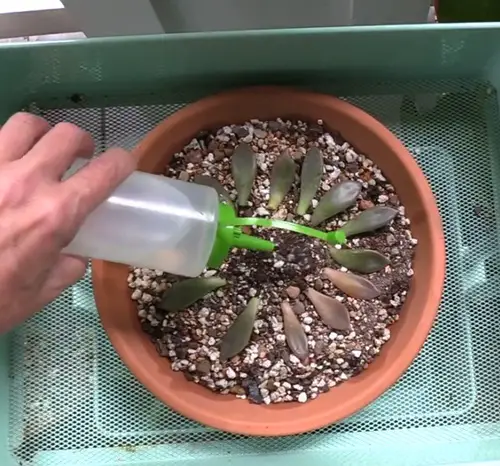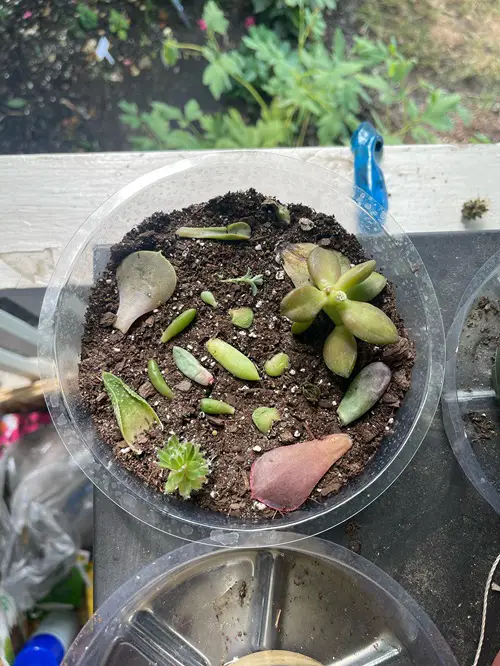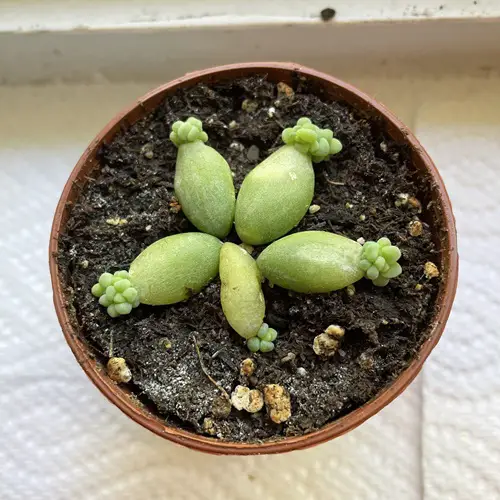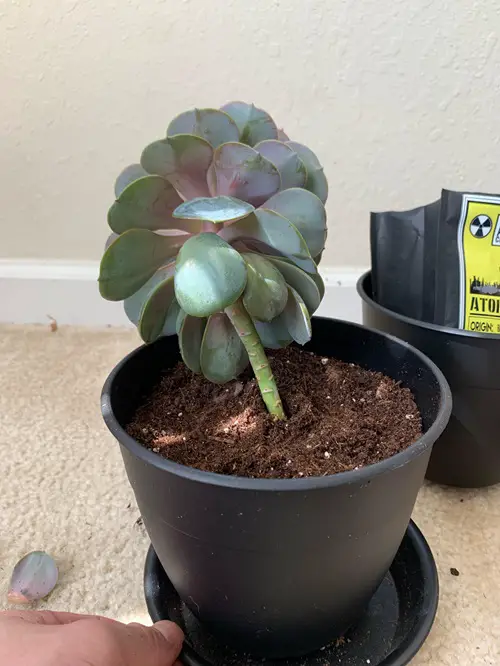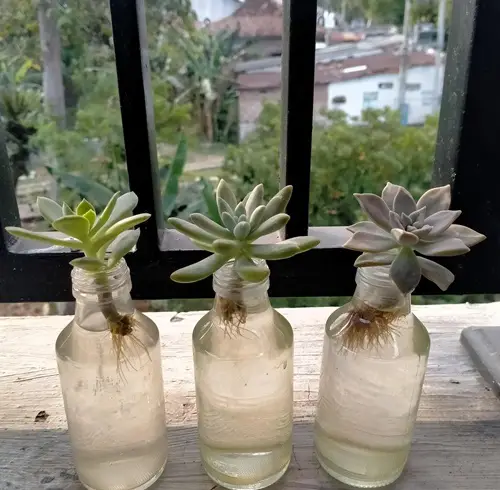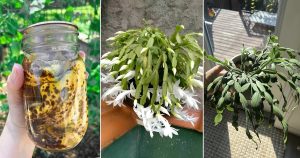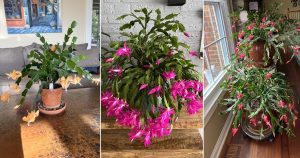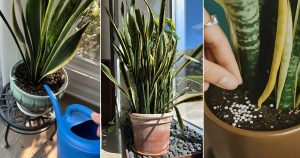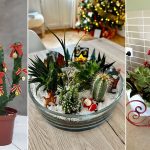Avoid these most common succulent propagation mistakes to make sure you are always cloning your less demanding plants successfully!
If you are already a proud parent of some lovely succulents and looking forward to multiplying them soon, then ensure you are not making these Common Succulent Propagation Mistakes!
Common Succulent Propagation Mistakes
1. Watering them Instantly After Planting
While you are propagating succulents from leaves or cuttings, do not water them at the time of planting.
Just mist lightly or use a spray bottle once you have planted them in the growing medium and keep them in an area that gets plenty of bright but indirect light.
Mist again only when the growing medium feels dry to the touch. This process mimics the natural environment of succulents, where they rely on moisture in the air or minimal rainfall rather than sitting in soggy soil. Overwatering at this stage will do more harm than good.
2. Not Choosing the Right Leaf
For successful propagation, always start with a healthy parent plant. A “healthy” succulent means firm, vibrant leaves with no pests, diseases, or signs of dehydration. Water the plant 2-3 days before taking a leaf to ensure it has enough nutrients stored.
Pick a plump, large leaf for propagation, as these carry more energy to support new growth. Smaller or damaged leaves often fail to root or grow well. Avoid dry, withered, or discolored leaves, as these might be too weak to thrive.
Here’s a little pro tip—propagate 3-5 leaves or cuttings in the same pot. This way, if one leaf decides not to root, the others can still give you success. Think of it as planting backup plans!
Not all succulents are suited for leaf propagation—Aeonium and Sempervivum grow better from cuttings. On the other hand, Echeveria and Sedum excel when propagated from leaves. If unsure, try a mix of leaves and cuttings to boost your chances of success.
3. Removing Pups Too Soon
When the pups appear, do not remove them immediately. Give them some time to grow and develop. This will increase the chances of successful propagation when you plant them in a new pot.
Be patient and wait until the pups are about one-third the size of the parent plant. This way, they will have developed enough roots to survive the transition. Rushing this process could lead to stunted growth or, worse, complete failure.
4. Not Waiting Till the Cuttings and Leaves Callus
Some gardeners do the mistake of potting up succulent cuttings and leaves immediately after taking them. Avoid doing this at all costs. Always allow the cuttings and leaves to rest for 2-4 days to form a callus.
The callusing process helps seal the cut edges, reducing the risk of infection or rot. If you’re in a particularly humid environment, you might even need to extend this waiting period slightly. Just make sure the callused area feels dry and firm before planting.
5. Not Exposing to the Right Amount of Light
After propagating, it is essential that the succulents get indirect light. People often keep the succulent in a dark and shady spot, which contributes more to the less successful chances of propagation.
Filtered sunlight or a bright windowsill works best. If you’re propagating indoors, consider using a grow light or other smart ways too to make sure they receive enough light without getting scorched. And remember to avoid prolonged exposure to harsh, direct sunlight, especially during the initial stages.
6. Not Using the Right Propagation Medium
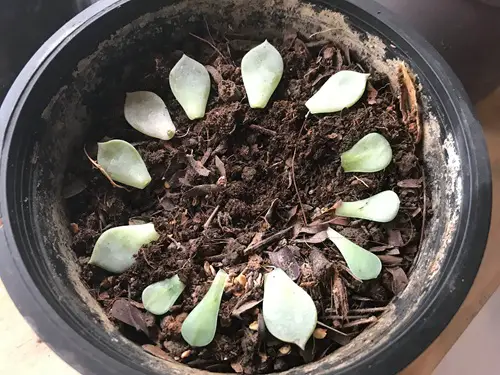
To ensure your succulents propagate in the best manner, it is essential to avoid planting them in regular garden soil. Pure coco peat/coir or peat moss would be the best to start these plants using cuttings or leaves.
You can also opt for cactus or succulent mixes that are available in the market. Whatever growing medium you choose, check that it is not too nutrient-rich. Excess nutrients can overwhelm young plants and encourage fast, weak growth instead of strong, sturdy roots.
7. Wrong Pot Size
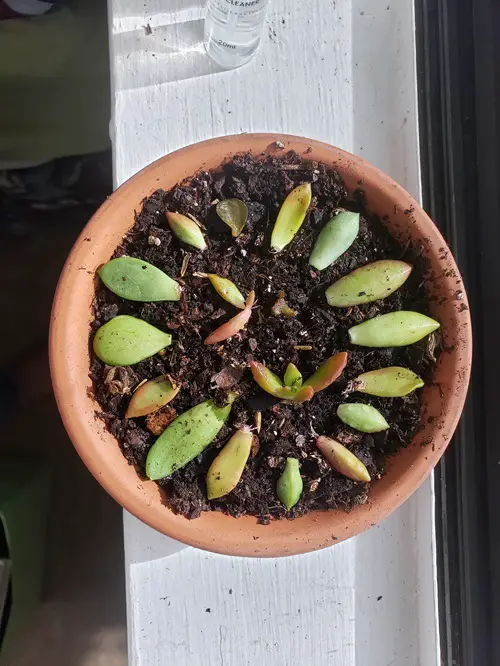
Do not use an excessively large and deep container while propagating succulents. The container needs to be shallow with drainage holes.
Too much space means extra soil, which holds unnecessary moisture. This creates the perfect environment for root rot. Instead, choose a snug pot that gives just enough room for the propagating leaves or cuttings.
Using trays, saucers, styrofoam, or plastic boxes are a good choice as long as they have a hole at the bottom to let the excess water out.
8. Exposing Propagating Succulents to Nature
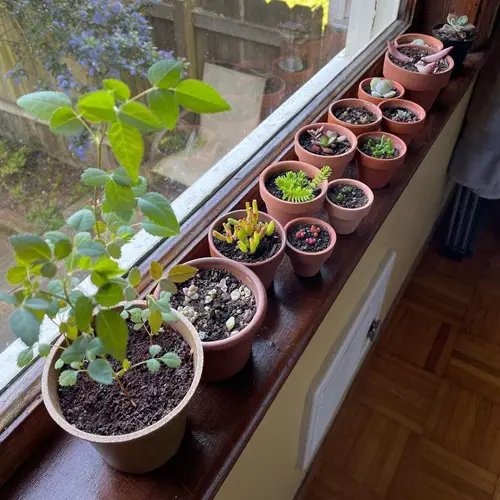
At the time of propagating succulents, confirm that they stay at a spot that gets filtered light. Exposing the growing plant to direct sunlight, rain, and frequent or sudden temperature fluctuations may kill it instantly.
If you plan to propagate outdoors, use a shade cloth or place the plants in a protected area like a porch. Keep an eye on the weather, and move them indoors during heavy rain or frost to ensure their safety.
9. Placing Them in Humidity
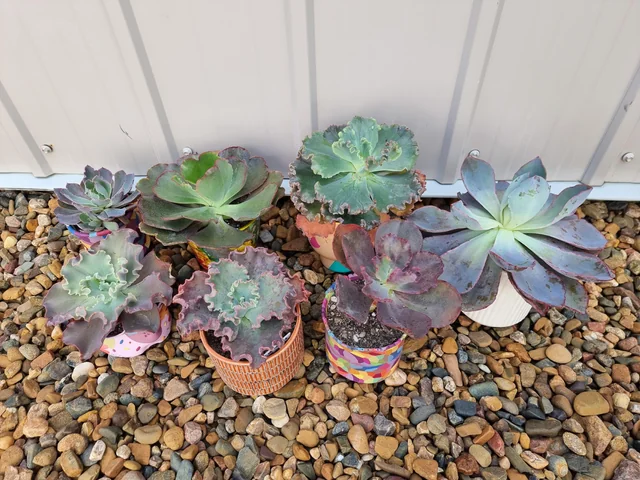
No, succulents are not fans of humid environments! Unlike tropical plants that thrive in moist air, succulents prefer dry conditions. When propagating them, avoid placing them in high-humidity areas like bathrooms, greenhouses, or near humidifiers.
High humidity can cause moisture to settle on the leaves or soil, creating the perfect conditions for rot or fungal infections. Instead, choose a location with good air circulation and low to moderate humidity. If you live in a naturally humid area, use a fan or dehumidifier to keep the air around your propagating succulents dry. Remember, succulents are desert natives—they’ll thank you for a bit of dryness!
Propagation is one of the most rewarding aspects of succulent care, but avoiding these mistakes can make it even more successful! Have you experienced challenges while propagating your succulents? Share your experiences and tips in the comments below—we’d love to hear from you!

